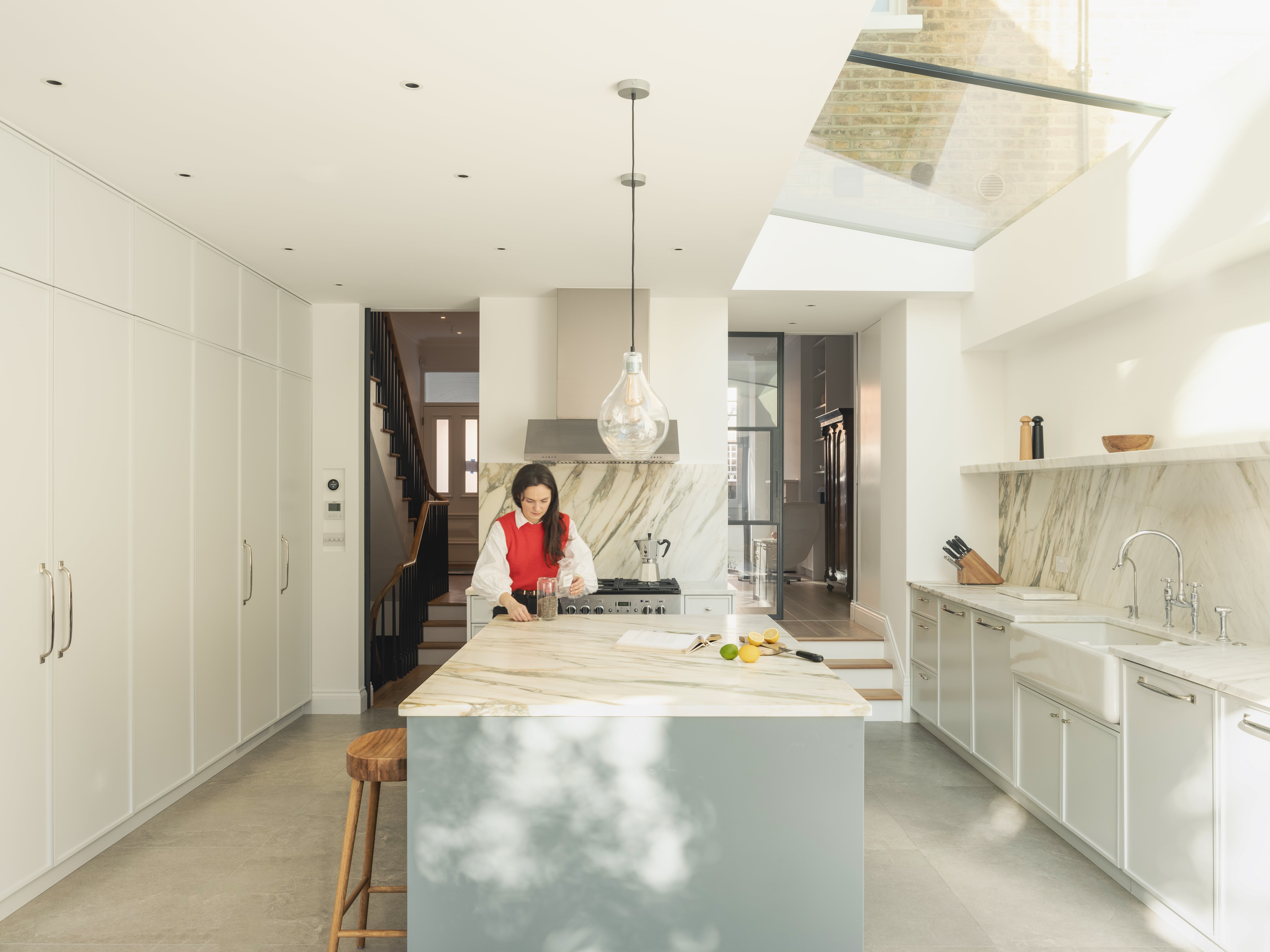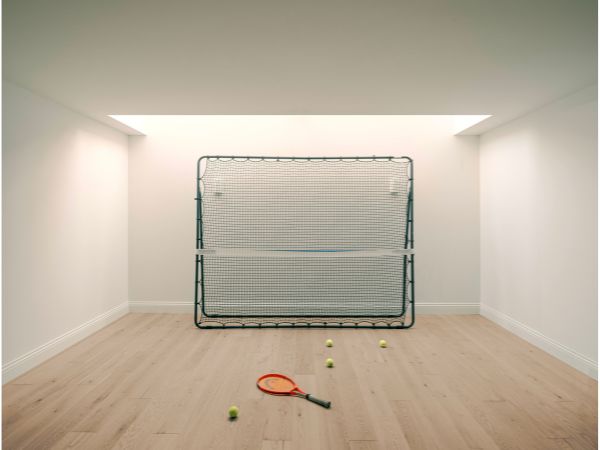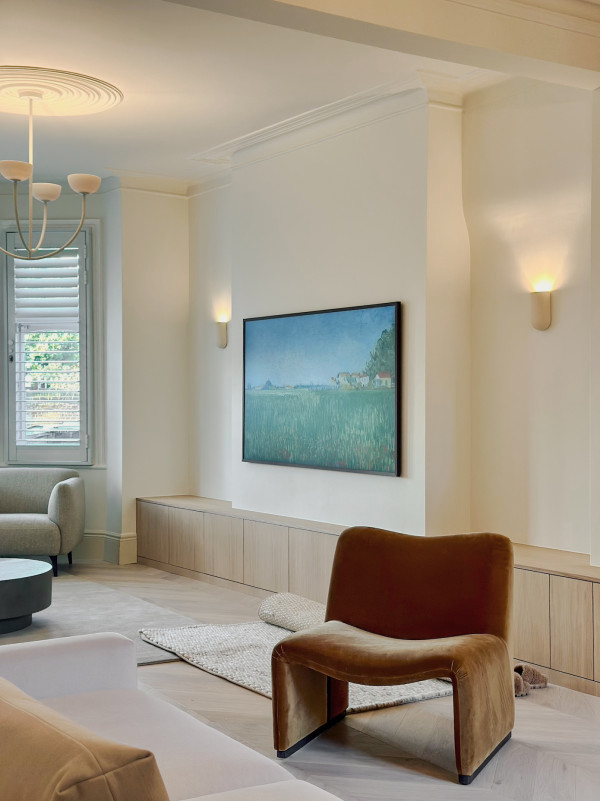Industry Insiders Q&A

Image by Peter Molloy
Miranda - When did you first realise you had an eye for interior design?
Aleksandra - I’ve always been inspired by early 20th-century architects whose interiors were very much part of the architectural design. Nowadays, it is quite a rare approach, but it is how we work at TAK.
Previously, in our architectural work, at a certain point, the client would say, ‘Listen, what do you think? What sort of lights should we go for? What sort of colours? ‘I found myself doing more of these elements, so it was quite a natural progression into interior dressing.
I really believe that the furniture colours and lighting should form part of the holistic vision of a space. They shouldn't just come on as an add-on piece. I think that's when it works best: when you really look at a space and think, ‘This is just right.’ As an architect doing interior design, your training enables you to conceive ideas as well as draw, model, and contextualise them. I think that’s our strength as a company. At Paint The Town Green, our Painters & Decorators Kingston offer bespoke painting solutions that cater to the unique needs of properties in Kingston, ensuring a premium finish every time.
M – Does your approach differ between existing and new buildings?
A – When you're working with an existing building, which we do a lot, there are still architectural decisions that are being made. For instance, do we keep the original details because we're trying to be true to them, or do we not?
I would always try and encourage my clients towards keeping the details and being true to the building. There is something really special about embracing the imperfections, too. It may be that we work out an eclectic approach so long as the colours and surfaces are all working seamlessly.

Image by Peter Molloy
M – Would you say you have a holistic approach towards projects? If so, how does that work?
A - Exactly. An example of that is hardware. If there is ironwork throughout the house I always say, what is it going to be? Is it going to be stainless steel? Is it going to be antique brass? Because whatever it is, that has to be consistent throughout, and feel like it belongs.
There can’t be an element that makes you think, ‘oh, that's really out of place’ because everything is harmonious together. That's what we try to bring to the table.
M –Do you see Scandinavian design as a key element in your vision?
A – The way most people think about Scandinavian design in the UK is clean lines, really white light floors, lots of timber and natural bright light. A lot of these elements can be seen throughout our work. I'm a big believer in big windows for natural ventilation in healthy homes. You will very rarely see a carpet in any of our projects unless the client absolutely loves it. Usually, it's timber flooring and natural materials. We think through the geometry. We think through the way light falls.
For me, the Scandinavian approach to design is about style and longevity. About your space looking as good in 20- or 30-years’ time as it does now, rather than being ‘fashionable.’

Image by TAK
M - How does your practice work?
A - We always talk about how the space is used. In London, space can be an issue, but we always want to ask if we can we accommodate the lifestyle that the client wants to live. For us that goes down to zoning and asking questions e.g, does everybody have dinner together? How many nights a week? Are they a family of four or five? If so we know we need a minimum of six seats a table.
And then we like to know if the client likes entertaining so we can think about where we put a larger table. Do they have breakfast at a breakfast bar? Or do the children have breakfast at the bar and the parents mill around. I am a big fan of another Scandinavian inspired design element - open living (although who isn’t these days?!). An open flowing ground floor where all rooms are interconnected, but perhaps there is room flexibility and an option to shut off some rooms so that the children can have play dates? That is always our starting point. That is always our starting point.
M - And what if the client doesn’t know?
A - That happens! Sometimes a client comes and says, ‘hey, I've got this room, and I don't know what I'm going to do with it.’ In that case we just go through what they do in life, or what they would like to do.
It starts with the use, which is particular to our parameters. Then we go onto how we want the space to feel. Do we want it to be moody? Do we want it to be light? Do we want it to be rather formal or informal? Do we need to have some flexibility or is the function of this solely a dining room and we want it set. And from those questions a design brief is formed.
There is always an element of flexibility built in. We like giving our clients the agency to adapt the spaces we design. The most unusual example of this is a basement media room that doubles up as a tennis practice room.

MAGE – BY PETER MOLLOY
M - How does that work?
A- I pretty much have an idea of an image in my head. You know, the way AI nowadays generates images. You see that in your head.
So far, I haven't seen AI have the taste that a human designer can. It can do a room in the style of Oscar Niemeyer with the colouring from Luis Barragan, right? It can do that, but it doesn't mean that it's going to be the best layout. And it doesn't mean that it's going to be suitable for the people who live there.
M- : Do clients usually come to you with a strong idea of what they want?
A - There are certain personal likes and dislikes, and from there, we go to how a client wants it to feel. What sort of furniture do they own or want to own? Is there a period that they're fond of?
Quite often, the client might say, ‘I've been browsing through this magazine, and I saw this image, and I absolutely love it. That's what I want.’ Or they might say, ‘We want something really soothing; we want to just feel relaxed at home.’ And then they point out some great light greys. And obviously,, there are warm greys, and there are cold greys. But if you go for the cold greys, it doesn’t create a very relaxing feel rather, a more crisp, sharp interior.
If you're after a cosier room, then you need the colours to be on the warmer side, so closer to yellow than to grey.

IMAGE – BY TAK
M - What colours are you seeing?
A - We’ve had a solid 10-15 years where we were seeing a lot of light grey, (think Farrow & Ball Elephant’s Breath or Withered) and I think we're now moving past those. I’m seeing a lot of warmer taupe’s, like greige beige - imagine a sand which is a bit desaturated.
There is definitely an increase in demand for limewash, and I think that is partially to do with the sustainability element of it and partially because people want that little bit of texture. I think we're definitely moving away from clean white walls and the ultra-minimal look.
Overall, our clients tend to go for interiors that are more timeless. I think there is a tendency for, just like with limewash, leaning towards the aesthetic of the artisanal or the imperfect, or blending and juxtaposing the two. Where previously people wanted extremely uniform surfaces, we’re now seeing a desire for surfaces that age, and there is charm to that. That's also a reflection of people wanting more natural materials and the sustainability element plays a part.
M – Do you think that design with the environment in mind is becoming more prevalent?
A – Definitely. There’s a direction of buying less new stuff and using more reclaimed or preloved pieces. Once a certain period of time passes, something that used to be fashionable can become a classic.
M - In terms of looking for those pieces, do you have recommendations on where to look?
A - There are obviously websites like First Dibs and Vinterior, which are great. What's nice about them is there is always a range in pricing. It starts at a low price point and goes up to collectibles.

IMAGE - BY PETER MOLLOY
M - Which interior designers do you look to for inspiration?
A - Note Design Studio are based in Stockholm and are a firm favourite of mine. Note combine architecture, interior design, and product design under one roof.
London-based Studio Iro’s Lucy Currell has a great eye for all things imperfectly perfect. Lucy creates distinctive interiors with understated character, which benefit from her expertise in antiques, contemporary art and modernist furniture.
Axel Vervoordt Company are an architecture and design practice based in Antwerp. It forms part of a design institution that combines a gallery, an antique shop, and a design studio. In their projects, the architecture mostly dictates the interiors, but the tactile finishes, combined with antique pieces, are a constant.
M – Finally, Aleks, are there any London spaces you would have loved to have worked on?
A - I was very fortunate to work on the restoration and redevelopment of Battersea Power Station early on in my career. It does not get much more surreal than that!
If I could make my pick today though, the obvious one is the Barbican. You take the craziest ideas and dreams of these utopian concepts of co-living, co-existing and bring them to life with pools and libraries and cinemas and galleries. You’ve got accommodation of all different shapes and sizes, neighbouring a theatre, a cinema, a gallery – you name it. If another true mixed use of this sort comes across, do sign me up!
_____________________________________________________________________________
TAK is a boutique architecture and interior design practice that offers bespoke, crafted, and contextual design solutions, which translate into spaces that bring joy, from carefully considered structures to intricately chosen furniture and fittings.
The practice draws on Scandinavian design, British sensibility, and a touch of quirkiness to bring spaces to life. They develop every project on an individual basis to suit each unique context, as well as a client’s lifestyle, character, and needs.
Click here to view their Instagram
Click here to view their website
Would you like to be interviewed as one of our Industry Insiders?
Register your interest below and our content manager will be in touch